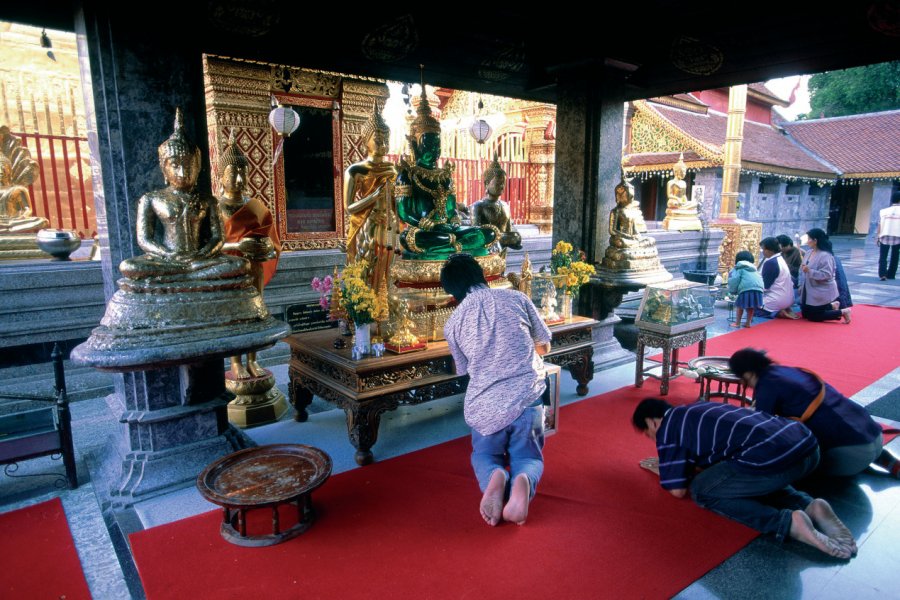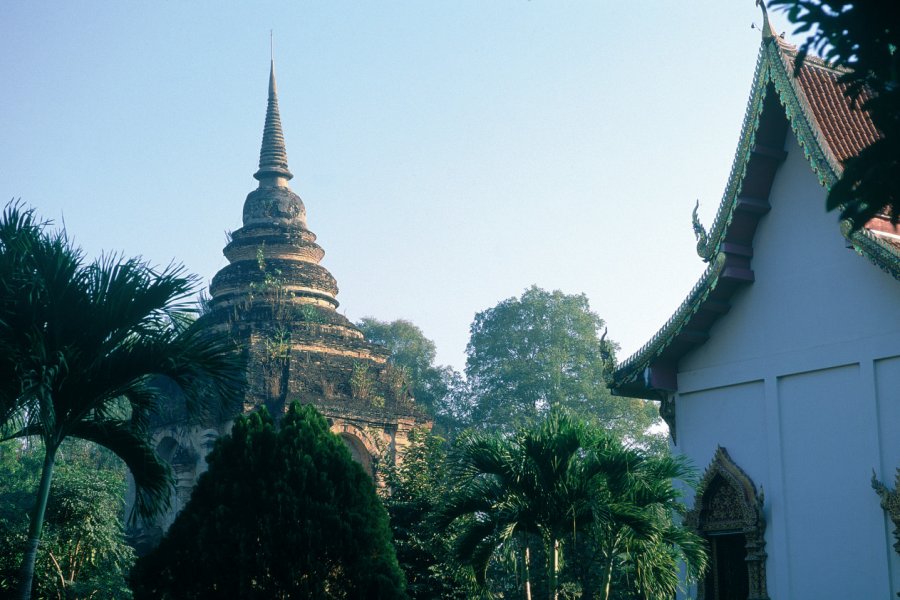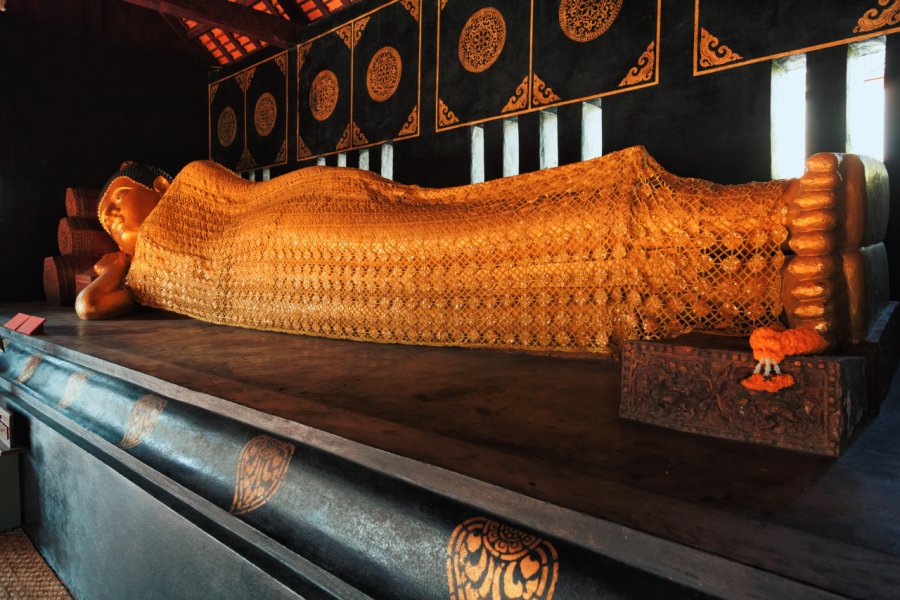Travel Guide Chiang Mai
Chiang Mai, the main city in northern Thailand, 700 km from Bangkok, boasts the charm of provincial cities and a quality of life appreciated by foreigners. The destination is known for its temples, its large university and the proximity of Hmong mountain villages, including Ban Doi Pui or Bor Sang, which have preserved their traditional wooden houses, customs and magnificent costumes. The temples of Chiang Mai alone are worth a stay in the north, including Wat Phra Singh, temple of Phra Singh (Buddha lion), home to a highly revered statue, the precious Wat Ketkaram, Wat Ket for intimates (15th century), near a beautiful pagoda, a Chinese market and a history museum, Wat Sisuphan (silver temple), grey in colour, where you can follow meditation sessions and admire the wall paintings on the theme of Asian religions. On Sundays in the late afternoon and evening we walk along the famous Ratchadanoen Street to enjoy street food and enjoy the Thai pedestrian market that aligns the craft stands. You can also go to the spring, to the craftsmen's village of Ban Tawai, 15 km from Chiang Mai. Closer, 5 km from the city, we discover the archaeological site of Wiang Kum Kam, in a green area. In addition, you will have to climb the 109 steps holding the dragon-shaped ramp of the temple of Doi Suthep, the sacred mountain, dear to Buddhists and now a popular tourist site. Finally, you should know that the city's zoo is home to a couple of pandas. To make sure you don't miss out, check out your favourite tourist guide.
What to visit Chiang Mai?
Suggested addresses Chiang Mai
When to go to Chiang Mai?
When to discover Chiang Mai? From November to February, it is the dry and cool season and the best time to go to Chiang Mai. The sun shines, but temperatures can drop quite low or even touch the freezing point, especially at night. In April, a hot inter-season (about 25°C) begins, which lasts until the end of May with alternating tropical rains. From June onwards, it is the rainy season, although it is less frequent in the north. It lasts until October and culminates in September, the month of the low tourist season. July, August and September are the three months of the low tourist season in Chiang Mai. If you go to Thailand in April, don't miss the Water Festival, or Songkran, which celebrates the Buddhist New Year, everyone drinks themselves in the streets, laughs guaranteed!
Weather at the moment
Chiang Mai has a tropical savannah climate with three seasons: the warm season with temperatures between 30°C and 35°C (March/June), the rainy season with daily rains (June/October) and the cold season with temperatures between 15°C and 30°C (October/February). In February and March, air pollution is often above recommended international standards.
Thailand in general and Chiang Mai in particular is a cheap destination. The standard of living is much lower than in a European country like France, 60% on average. One eats in restaurants and sleeps in guesthouses for a modest sum and even in luxury hotels for an excellent quality-price ratio. The currency is the baht, you can easily exchange it and pay by credit card. Tipping is customary but not mandatory.
You don't need a visa for Thailand and Chiang Mai if you stay there for less than 30 days. And one return trip to the border (Laos, Myanmar or Cambodia...) is enough to renew this 15-day stay permit (4 renewals allowed). Beyond that, you will have to make an additional flight each time you leave the country.
No mandatory vaccines for Thailand and Chiang Mai but DT-Polio, typhoid, hepatitis A and B vaccines are recommended. If an anti-malaria treatment is officially recommended, a protection against insects is enough in the south, but for the north and Chiang Mai except if you go to the surrounding mountains the risks of malaria are quite high and the protection requires a treatment. Water is not drinkable, it is recommended to drink bottled water and to avoid raw vegetables and seafood in the popular shops.
Practical information
- When to travel?
- Weather forecast
- Budget
- Formalities
- Health
- How to travel by yourself?
- How to get organized?
- Getting around
Media
How to go to Chiang Mai? Our advice & tips
Thailand has long been a mass tourism destination and is under attack by many tour operators, but not all offers are equal. Take the time to choose the right tour according to your travel desires and do not hesitate to compare the services offered. Beware of low prices, they do not always include transfers, drinks and meals. Even if Thailand is an affordable destination, this can be a significant amount of money on a long circuit.
Discover our selection of travel agencies for this destinationDomestic and international flights are concentrated in Suvarnabhumi, located 35 km east of Bangkok. No particular risks for people travelling alone, the country is generally safe, but care must be taken with personal belongings in tourist areas, as theft can occur. You should know that drugs are not a joke in Thailand. A simple consumer faces a minimum of 10 years in prison. Eating and staying in Chiang Mai is no problem.
Domestic flights are convenient and quite cheap. There are also ferries between the islands and the mainland. In Thailand, the buses which make the connections between the cities offer a varied level of comfort and all the budgets will find there their account. As for the railway network, it is rather good in Thailand, but the not really modern cars are not very comfortable.




























